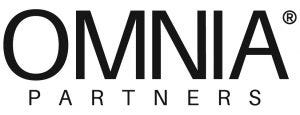
Omnia Partners
Landscape maintenance supplies and equipment are often near the top of local government shopping listsLandscape maintenance supplies and equipment are often near the top of local government shopping lists
August 27, 2024

City and county governments are often key buyers of landscape equipment and supplies, says Keith McGinty, director of bids and government accounts at SiteOne Landscape Supply, a firm that sells soil maintenance products, irrigation, lighting, nursery products, tools, equipment, safety items and hardscapes in addition to landscape supplies. The company has more than 600 locations throughout the U.S.
McGinty notes however, that local governments may buy less regularly and in smaller quantities than for-profit landscaping businesses. “Cities and counties are often tasked with maintaining various types of public areas year-round and will have regular need for supplies and equipment.”
Local governments manage around 11.8 million acres of land, amounting to 0.5 percent of all U.S. land area, says Headwaters Economics, an independent, nonprofit research group. The group’s “Protected Areas Database of the United States” estimates the vast expanses of public land that government jurisdictions maintain. Nearly 40 percent of the U.S. is public land, supported by taxpayers and managed by federal, state or local governments.
Here are some of the projects local governments complete that may require landscaping supplies and equipment, according to the SiteOne executive:
Public parks, sports turf and golf course management. According to McGinty, these projects, which often include green spaces or walking and biking trails, regularly need products including mulch, irrigation equipment, spreader-sprayers, herbicides, fungicides and other similar supplies and equipment.
Roadside beautification. These projects often cover medians, safety islands as well as pedestrian-friendly urban areas. Some of the products required regularly in these projects include mulch, irrigation equipment, spreader-sprayers, herbicides, fungicides and comparable supplies and equipment.
Stormwater drainage. McGinty notes that local governments frequently work on stormwater drainage projects to mitigate flooding and erosion of both unpaved and paved surfaces. He says a variety of drainage equipment can be involved in these projects, from pipes and culverts to erosion control mats and bulk construction aggregate.
Public buildings. Many public structures have lawns, green spaces, or flower gardens and trees on their campuses. “The agencies or departments tasked with maintaining those spaces need lawn and plant care equipment and supplies,” McGinty explains.
Urban development and redevelopment. McGinty notes that these projects often encompass large-scale development or redevelopment of urban areas. Depending on the scope of the project, various amounts of landscaping supplies, equipment and tools will be required to make the grounds sparkle.
McGinty tells Co-op Solutions that government project managers should analyze each project before they make significant investments in landscape tools, equipment and other products. “It’s important to identify the types of projects you will be completing. Depending on your area, some pieces of equipment or agronomic products are better suited to specific tasks while others are designed with multiple uses in mind.”
Noting that choosing the right tool categories for a specific project is crucial, McGinty says, “Different projects require different tools and not every tool is made equally. By taking the time to research the pros and cons of tool models and power sources, your team will save time and resources in the long run.”
He adds that his firm can provide key pointers to project managers: “SiteOne is experienced in working with government agencies and departments through the bid process to make sure the correct products and services are sent to the field and with all the required documentation.”
McGinty says safety should be a top priority for any landscaping crew. “By providing ample training and personal protective equipment such as eye wear, ear protection, gloves, respirators and high-visibility vests, local government managers can ensure their crews stay healthy, safe and OSHA-compliant.”
He suggests that project and landscape crew managers monitor local ordinances regarding environmentally friendly equipment, fertilizers and other chemicals. “Some government agencies or departments have internal policies about them even where no such laws or regulations yet exist.”
McGinty notes that some municipal governments are bound by laws or regulations requiring agencies and departments to publicly seek bids before purchasing supplies or services. He points out that these requirements can add time to the buying process. He advises: “Start the purchasing process with bidding services from distributors like SiteOne to help expedite the process.”
The SiteOne executive says cooperative purchasing agreements can help local governments streamline the procurement process by reducing the time spent seeking bids, evaluating vendors and negotiating individual contracts. He adds that cooperative deals can help produce an expanded vendor pool, reduce administrative costs and improve the quality of products and services available to cities and counties. “With large, multi-department or agency bulk buys, the entity buying the supplies can negotiate terms, pricing and specifications for just one large purchase instead of several smaller purchases of the same thing.”
Michael Keating is senior editor for American City & County. Contact him at [email protected].
.jpg?width=100&auto=webp&quality=80&disable=upscale)
.jpg?width=400&auto=webp&quality=80&disable=upscale)







